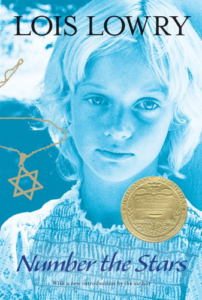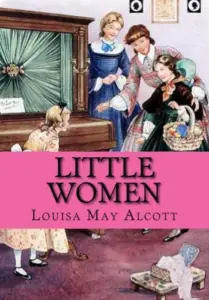Never Let Me Go
Book Author: Kazuo Ishiguro
Summary reviewed by:
Terrence Timmons
Terrence Timmons
Analyst
Bachelor of Arts (BA), University Of California, Santa Barbara 2019
With over 4 years of experience as an analyst. Terrence Timmons is committed to analyzing summaries without compromising on quality.
Never Let Me Go: Summary
Never Let Me Go unfolds within the haunting confines of Hailsham, an English boarding school where the children are special, though they don't yet understand why. What begins as a nostalgic reflection by Kathy H., the novel's narrator, quickly spirals into a disturbing exploration of humanity, ethics, and the cost of survival. As Kathy recalls her childhood, the friendships she formed with Ruth and Tommy, and the peculiar lessons they were taught, an unsettling truth begins to surface: these children were never destined for a normal life.
In Kazuo Ishiguro’s dystopian world, Hailsham isn’t just a school; it's a farm cultivating human clones, whose sole purpose is to donate their organs until they "complete"—a euphemism for dying. The novel is a poignant meditation on the human condition, exploring themes of identity, memory, and the ethical boundaries of science. Through Kathy's recollections, the reader is drawn into a narrative that is both intimate and profoundly disturbing, posing uncomfortable questions about what it means to truly live. Although not part of a series, this standalone novel leaves an indelible mark on the reader, forcing them to confront the fragility of life and the power of hope in the face of inevitable tragedy.
Spoilers (watch a short ad to reveal spoilers)
Never Let Me Go: Genres
Fiction
Dystopian
Science Fiction
Coming-of-Age
Romance
Never Let Me Go: Main Characters
Kathy H.: Kathy is the narrator and protagonist, a thoughtful and introspective woman who values her memories and the connections she forms with others. Her deep sense of care and loyalty is evident in her commitment to her friends, especially Tommy, whom she nurses through his final donations, even as she grapples with the inevitability of their fate.
Tommy: Tommy is a sensitive and often misunderstood boy who struggles with controlling his emotions. He values honesty and seeks to understand the truth about their existence. His belief in the possibility of deferrals illustrates his deep hope and desperation for a different outcome, showing his vulnerability.
Ruth: Ruth is strong-willed, manipulative, and sometimes insecure, striving for a sense of control in a world where she has none. She values her relationships but often expresses this through possessiveness, particularly in her early attempts to monopolize Tommy’s affections. However, in her final moments, she demonstrates a capacity for self-awareness and remorse, urging Kathy and Tommy to seek a deferral.
Miss Lucy: A guardian at Hailsham who is more straightforward and less accepting of the school’s secrecy. She values truth and transparency, often struggling with the ethical implications of the children’s fate. Her decision to reveal the harsh reality of the students’ purpose shows her internal conflict and moral compass.
Madame (Marie-Claude): An outsider to Hailsham who collects the students’ art. She values the idea of proving the humanity of the clones through their creativity. Her interactions with the students are cold, reflecting her discomfort with their reality, yet she is committed to the cause of showing that they have souls.
Miss Emily: The headmistress of Hailsham, who is dedicated to maintaining the school’s mission. She values the preservation of the students’ dignity, even within the confines of their predetermined roles. Her revelation about the experiment behind Hailsham underscores her complex views on ethics and the worth of the clones’ lives.
.
Never Let Me Go: Themes
The Ethics of Cloning: The novel explores the moral implications of creating human clones for the sole purpose of harvesting their organs. This theme is central to the story, as the characters gradually realize their grim fate and question the ethical boundaries of science and society.
The Illusion of Freedom: The characters live under the illusion that they have some control over their lives, but the reality of their predetermined destinies shatters this notion. The concept of deferrals represents the false hope of escaping their fate, underscoring the theme of inevitable fate.
Memory and Identity: Kathy’s reflections on her past highlight the importance of memory in shaping identity. The students’ art and personal histories are all that differentiate them from being mere commodities, and the preservation of these memories becomes a way to assert their humanity.
The Nature of Love: The novel examines love in various forms—romantic, platonic, and self-love. Kathy, Tommy, and Ruth’s complex relationships illustrate how love provides comfort and meaning, even in the face of despair, but also how it can be manipulated and misunderstood.
The Dehumanization of the Other: Through the treatment of the clones, the book addresses how society dehumanizes those deemed as ‘other’ or less valuable. This is seen in how the clones are raised with limited knowledge of their fate, treated more as resources than individuals with rights.
Never Let Me Go: What You Need to Know
(Contains Spoilers: Perfect for readers seeking a quick review.)
The story is set in a dystopian England where human clones are bred and raised for the sole purpose of donating their organs. The narrative follows Kathy H., who looks back on her time at Hailsham, a seemingly idyllic boarding school where the children are encouraged to create art and poetry but are kept ignorant of their true purpose. Kathy forms deep bonds with two other students, Ruth and Tommy, and these relationships drive much of the story's emotional depth.
As the children grow older, they begin to piece together the truth about their existence. Ruth and Tommy, once involved romantically, drift apart, and Ruth attempts to assert control over her life by seeking power within the group dynamics. However, as they transition to adulthood, the reality of their fate becomes undeniable: they are clones created to donate their organs until they die, a process euphemistically referred to as "completing."
The concept of deferrals—a rumored reprieve from donations for those who are in love—emerges as a beacon of hope for Kathy and Tommy after Ruth's death. Ruth, filled with regret for keeping them apart, urges them to find Madame and seek a deferral, believing it to be their only chance at a life together. Kathy and Tommy eventually meet Madame and Miss Emily, only to discover that the deferrals were a myth and that Hailsham itself was an experiment to demonstrate that clones have souls. The artwork the students created was supposed to be evidence of their humanity, but society ultimately rejected this notion, leading to the closure of Hailsham.
Tommy, devastated by this revelation, completes shortly after his final donation, leaving Kathy to face her own fate alone. The story concludes with Kathy accepting the inevitability of her death, reflecting on her memories of Hailsham, her friends, and the fleeting moments of happiness they shared. The bleak reality of the clones' existence is unchallenged, leaving the reader with a haunting meditation on what it means to be human in a world that sees some lives as expendable.
Never Let Me Go: Methodology
Our summary of Never Let Me Go is designed with you, the reader, in mind. We focus on extracting the novel's key themes—such as the ethics of cloning and the nature of love—while preserving the emotional depth and philosophical questions that define Kazuo Ishiguro's work. By conducting thorough readings and expert analysis, we distill the narrative into a concise format, ensuring that the essence of the story is captured without losing its haunting impact. Each summary is rigorously reviewed for accuracy and clarity, upholding the highest standards of quality and integrity.


Never Let Me Go
Date Published: April 5, 2005
Disclaimer: As an Amazon Associate I earn from qualifying purchases.




